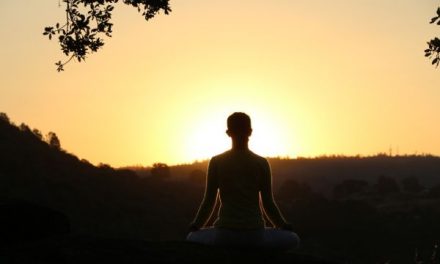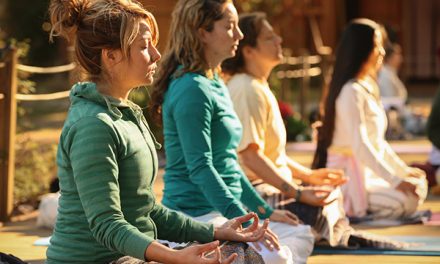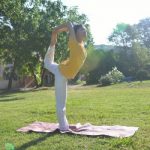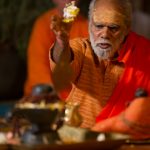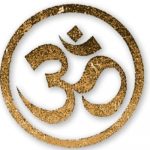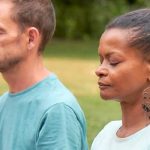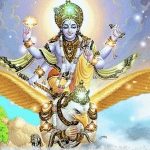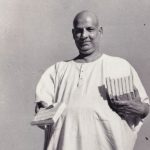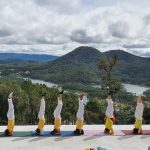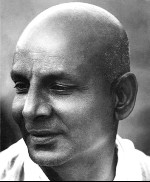 Yoga Sadhana
Yoga Sadhana
From the Book “The Paths of Yoga” – by Swami Sivananda
Sadhana means any spiritual practice that helps the sadhaka to realise God. Abhyasa and sadhana are synonymous terms. Sadhana is the means to attain the goal of human life. Without sadhana no one can achieve the purpose of life. Sadhana differs in different individuals according to capacity, temperament and taste. Everyone must take to some kind of sadhana to attain the state of final beatitude.
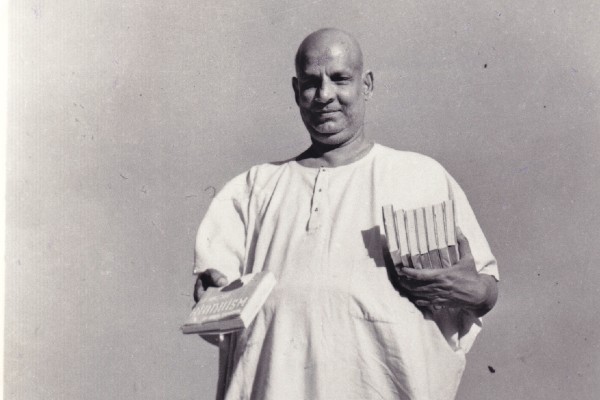 Sadhya is that which is attained through sadhana. It is God or Atman or Purusha. If you want to evolve quickly you must have the right kind of sadhana. The spiritual path is thorny, precipitous and keen like the edge of a razor, but nevertheless has been trodden by those of strong determination, undaunted spirit and indomitable energy. When once you make up your mind to tread the path, everything becomes smooth and easy. There is descent of grace from the Lord. The whole spiritual world will back you up. The path will directly take you to the realms of infinite bliss.
Sadhya is that which is attained through sadhana. It is God or Atman or Purusha. If you want to evolve quickly you must have the right kind of sadhana. The spiritual path is thorny, precipitous and keen like the edge of a razor, but nevertheless has been trodden by those of strong determination, undaunted spirit and indomitable energy. When once you make up your mind to tread the path, everything becomes smooth and easy. There is descent of grace from the Lord. The whole spiritual world will back you up. The path will directly take you to the realms of infinite bliss.
Just as one coat will not suit Mr John, Mr Tom, Mr. Banerjee or Mr. Iyer, so also one path will not suit all people. There are four paths to suit four kinds of temperament. They all lead to the same goal, the attainment of Ultimate Reality. Roads are different but the destination is the same. The four paths that are inculcated for the achievement of this ultimate Truth from the different standpoints of one of action or the busy working person, the emotional or devotional person, the mystic, or the philosopher or the one of reason and will are respectively called karma yoga, bhakti yoga, raja yoga and jnana yoga.
These four paths are not antagonistic to one another, but on the other hand are complementary. One-sided development is not commendable. Karma yoga purifies and develops the hand. Bhakti yoga destroys vikshepa (distraction of the mind) and develops the heart. Raja yoga steadies the mind and makes it one-pointed. Jnana yoga removes the veil of ignorance and develops will and reason. Therefore one should practise the four yogas.
Bhakti Yoga Sadhana
Those who follow the path of devotion should do japa, read the holy scriptures such as the Bhagavata or the Ramayana. By the practice of navavidha bhakti, (the nine modes of devotion) the bhakta should develop bhakti to a very high degree.
Sravana—hearing stories of the Lord, smarana—remembering the Lord at all times, kirtana— singing the Lord’s glories, vandana—prostration to the Lord, archana—worship of the Lord through ritual, padasevana— service at the Lord’s feet, sakhya—worship as a friend of the Lord, dasya—worship as a servant of the Lord, atma nivedana—complete surrender to the Lord, are the nine methods to develop bhakti. Bhaktas should observe vrata (vows), anushthana (austerity) and do prayers and manasic puja (mental worship).
They should serve others, realising that the Lord resides in the hearts of all. This is the sadhana for those who tread the path of bhakti yoga.
Karma Yoga Sadhana
Those who follow the path of karma yoga should do disinterested selfless service to the suffering humanity and society in various ways. They should surrender the fruits of action to the Lord as isvararpana (offering to God). They should give up agency by realising that they are the instruments in the hands of God. They should get rid of their selfishness and control their indriyas (senses). They should completely consecrate their lives in the service of humanity. They should consider that the whole world is a manifestation of the Lord.
If they serve people with such bhava (feeling, attitude) their hearts get purified in the long run. This is the sadhana for karma yogins. This is very important for all beginners in the spiritual path. This is the first step in the spiritual path. This is not the goal itself. Many erroneously think so and neglect the higher course of sadhana. They should advance still further and through dharana, dhyana and samadhi reach the highest goal.
Raja Yoga Sadhana
A raja yogi slowly ascends the yogic ladder through the eight steps. He gets ethical training in the beginning to purify himself by the practice of yama (restraints) and he practises niyama (observances). Then he steadies his posture (asana). Then he practises pranayama to steady his mind and purify the nadis.
Then by the practice of pratyahara (control of the senses), dharana (concentration) and dhyana (meditation) he gets samadhi (super-conscious state). Through samyama (dharana, dhyana and samadhi taken collectively). he attains different siddhis (powers). He restrains all the mental modifications that arise from the mind.
Hatha Yoga Sadhana
The students of hatha yoga should try to awaken the kundalini shakti that lies dormant in the muladhara chakra by mudras, bandhas, asanas and pranayama. They should try to unite the prana and apana and send the united prana-apana through the sushumna nadi. Heat is increased by retention of breath and vayu (prana) ascends up along the kundalini to the sahasrara chakra through the different chakras. When kundalini is united with Lord Siva at the sahasrara chakra the yogi attains supreme peace, bliss and immortality.
Jnana Yoga Sadhana
Those who take up the path of vedanta or jnana yoga should acquire first the four means of salvation (sadhana chatushtaya): viveka, vairagya, shat sampat and mumukshutva. Viveka is discrimination between the real and the unreal. Vairagya is indifference to sensual enjoyments. Shat sampat or the sixfold virtues consists of: sama— serenity of mind, dama—control of the indriyas, uparati—satiety, titiksha—power of endurance, sraddha—intense faith and samadhana—mental balance. Mumukshutva is intense desire for liberation.
Then they approach a Brahmanishtha guru, one who has realised the Supreme Self, and hear the srutis (revealed truth) from him. Then they reflect and meditate on the Self and eventually attain Atma sakshatkara (Self-realisation). Then the jnani claims with joy: ‘the Atman alone is, one without a second. Atman alone is the one Reality. I am Brahman, Aham Brahma Asmi. Sivoham. Sarvam Khalvidam Brahma.’ The liberated sage (jivanmukta) sees the Self in all beings and all beings in the Self.

